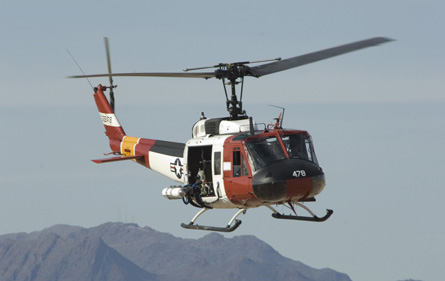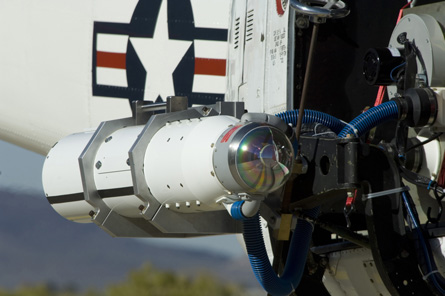As the competition for the joint air-to-ground missile (JAGM) contract nears the fly-off stage, the Raytheon/Boeing team has completed a series of flight tests on the critical tri-mode seeker system.
Flying the Raytheon-designed seeker aboard a Bell UH-1 helicopter confirmed the system's ability to distinguish between a mix of stationary targets, including tanks, trucks and buildings, says Mike Riley, Raytheon's business development manager for army systems.
 |
|---|
© Raytheon |
Although the US Army requires the tri-mode seeker to track moving targets in all weather, those advanced sensor functions were not included in the captive carry tests, Riley says.
The Raytheon/Boeing and Lockheed Martin teams are scheduled to stage an entire fly-off later this year, with the winner advancing into the engineering, manufacturing and development phase, and later, full-rate production and service entry in fiscal year 2016.
Winning the JAGM contract represents a massive business opportunity for both competitors. The multi-warhead JAGM will replace ageing stocks of the laser-guided Lockheed AGM-114 Hellfire and the optically guided Raytheon AGM-65 Maverick.
The army and the US Navy, however, want the JAGM to be useful even for extreme scenarios, such as if a target is moving at night and in bad weather.
Raytheon and Lockheed are each designing a tri-mode seeker, with a semi-active laser as the primary guidance system. The seeker also integrates an imaging infrared camera to track targets at night and a millimetre wave radar to track targets in the rain.
 |
|---|
© Raytheon |
Raytheon has designed the tri-mode seeker for its JAGM system offering |
For Raytheon's team, Boeing is responsible for providing the JAGM missile body, which is based on the UK's MBDA-developed Brimstone missile, and an all-new and advanced rocket motor.
The JAGM will be fired from helicopters and fighters, which poses a technical challenge for the rocket propellant. The Hellfire, for example, uses a no-smoke propellant. At very low temperatures, the chemical mixture can debond from the rocket casing and crack, creating a explosion when ignited, says Steve Sherrick, a Boeing business development manager.
Drawing on Raytheon's and Boeing's experience with supplying missiles for fighters, the former team believes it can offer a low-risk propellant that meets the low-temperature requirement, Sherrick says. The JAGM also seeks to double the range of the Hellfire missile, increasing to 16km (8.6nm) when fired from a helicopter.
The JAGM programme emerged after the Joint Common Missile contract awarded to Lockheed was terminated in 2006. Rather than award a traditional development contract, the US government chose to fund a competitive fly-off, with the selected missile to require only minimal further development before entering service.
But having two missiles available at the end of the fly-off could spark a debate about the JAGM's sole-source strategy, Riley says.
The idea of a dual-source strategy has come up in "discussions we've had with folks in [the Office of the Secretary of Defense]", Riley says. "There's been a discussion of having multiple sources for production. Just because you're talking about winner-takes-all, that may not be the best strategy for the industrial base."
Source: Flight International




















